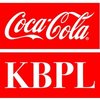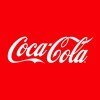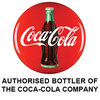
i
Kandhari
Beverages
Filter interviews by
Kandhari Beverages Interview Questions and Answers
35 Interview questions
A compressor is a mechanical device that increases the pressure of a gas by reducing its volume.
Compressors are commonly used in air conditioning systems to compress refrigerant gas.
They are also used in industrial applications to compress air for various purposes.
Compressors can be classified into different types such as reciprocating, rotary, and centrifugal compressors.
The CFM output of a 40-bar compressor depends on the specific model and size of the compressor.
CFM output varies based on compressor model and size
Higher pressure (40 bar) typically results in lower CFM output
Consult manufacturer specifications for accurate CFM output
Current CTC with expectations
Current CTC: INR 10,00,000 per annum
Expectations: Looking for a 20% hike in salary
Open to negotiation based on benefits package
Increasing productivity can be achieved by implementing efficient processes, providing proper training, setting clear goals, and fostering a positive work environment.
Implement efficient processes to streamline workflow and eliminate unnecessary steps.
Provide proper training to employees to ensure they have the skills and knowledge to perform their tasks effectively.
Set clear goals and targets for employees to wor...
To reduce down time, implement preventive maintenance schedules, train staff on troubleshooting techniques, analyze root causes of downtime, and invest in reliable equipment.
Implement preventive maintenance schedules to identify and address potential issues before they cause downtime
Train staff on troubleshooting techniques to quickly resolve issues and minimize downtime
Analyze root causes of downtime to identify ...
Manpower can be handled effectively by proper planning, training, delegation, communication, and motivation.
Plan manpower requirements based on workload and deadlines
Provide necessary training to enhance skills and productivity
Delegate tasks according to individual strengths and capabilities
Maintain open communication channels for feedback and problem-solving
Motivate employees through recognition, rewards, and car...
Kaizen is a Japanese business philosophy of continuous improvement involving all employees.
Kaizen focuses on making small, incremental changes to processes to improve efficiency and quality.
It involves employees at all levels of the organization in identifying and implementing improvements.
Kaizen promotes a culture of continuous learning and innovation.
Examples of kaizen include implementing 5S methodology, settin...
Responsibility in the context of a Quality Inspector involves ensuring products meet quality standards and specifications.
Ensuring products meet quality standards and specifications
Conducting inspections and tests to identify defects
Documenting and reporting findings
Collaborating with production teams to address quality issues
Implementing corrective actions to improve quality
Tie beam is a horizontal member connecting two columns, while plinth beam is a horizontal member at ground level connecting columns.
Tie beam is located at higher levels in a structure, while plinth beam is at ground level.
Tie beam is used to provide lateral stability to the structure, while plinth beam is used to support the masonry walls above ground level.
Examples: Tie beam is commonly used in bridges to connect...
The weight of materials in M30, 7.5, and 40 concrete mixes varies based on the specific mix design.
The weight of cement, sand, and aggregate in M30, 7.5, and 40 concrete mixes will be different.
M30 mix typically contains 1 part cement, 1.5 parts sand, and 3 parts aggregate by weight.
7.5 mix and 40 mix will have different proportions of materials compared to M30 mix.
Kandhari Beverages Interview Experiences
25 interviews found
(2 Questions)
- Q1. Previous experience
- Q2. Current CTC with expectations
- Ans.
Current CTC with expectations
Current CTC: INR 10,00,000 per annum
Expectations: Looking for a 20% hike in salary
Open to negotiation based on benefits package
(2 Questions)
- Q1. Quality related different question
- Q2. Technical questions
(2 Questions)
- Q1. Technical question
- Q2. Previous company working experience and questions
I applied via Walk-in and was interviewed in Jul 2024. There were 2 interview rounds.
(2 Questions)
- Q1. Tell me about yourself
- Ans.
I am a recent graduate with a degree in Chemistry, passionate about research and eager to learn and grow in the field.
Recent graduate with a degree in Chemistry
Passionate about research and experimentation
Eager to learn and grow in the field
- Q2. Qualification related questions
(2 Questions)
- Q1. About the process at company
- Q2. Quality, safety, situation based question
I appeared for an interview in Dec 2024.
(2 Questions)
- Q1. What is a compressor?
- Ans.
A compressor is a mechanical device that increases the pressure of a gas by reducing its volume.
Compressors are commonly used in air conditioning systems to compress refrigerant gas.
They are also used in industrial applications to compress air for various purposes.
Compressors can be classified into different types such as reciprocating, rotary, and centrifugal compressors.
- Q2. What is the cubic feet per minute (CFM) output of a 40-bar compressor?
- Ans.
The CFM output of a 40-bar compressor depends on the specific model and size of the compressor.
CFM output varies based on compressor model and size
Higher pressure (40 bar) typically results in lower CFM output
Consult manufacturer specifications for accurate CFM output
(20 Questions)
- Q1. How can you calculate how many trollies/trucks of soil needed to level a land
- Ans.
To calculate the number of trollies/trucks of soil needed to level a land, you need to determine the volume of the land and the capacity of each trolley/truck.
Calculate the volume of the land by multiplying the area of the land by the desired depth of soil to be added.
Determine the capacity of each trolley/truck in cubic meters.
Divide the total volume of soil needed by the capacity of each trolley/truck to get the numb...
- Q2. What is theodlite and its function
- Ans.
A theodolite is a precision instrument used for measuring angles in the horizontal and vertical planes.
Used in surveying and construction to measure angles, heights, and distances
Consists of a telescope mounted on a rotating base with graduated circles for precise measurements
Commonly used for setting out building corners, aligning structures, and determining elevations
Can also be used for measuring horizontal and vert...
- Q3. What is total station and how it is better thsn teheodolite
- Ans.
Total station is a surveying instrument used for measuring angles and distances, combining the functions of a theodolite and electronic distance meter.
Total station is more accurate and efficient than a theodolite as it can measure both horizontal and vertical angles as well as distances simultaneously.
It also has the ability to store data, calculate coordinates, and perform various surveying tasks digitally.
Total stat...
- Q4. What is a joggle and why it is used
- Ans.
A joggle is a type of joint used in construction to create a flush connection between two members.
A joggle is typically a small offset or notch in one of the members to allow for a seamless connection with another member.
Joggles are commonly used in steel structures to connect beams or columns.
They help in maintaining the structural integrity and alignment of the members being joined.
Joggles can also be used in concret...
- Q5. What is PEB and what are its components
- Ans.
PEB stands for Pre-Engineered Building, which is a steel structure built using pre-designed components.
PEB is a type of building structure that is fabricated using steel components that are pre-designed and prefabricated in a factory.
Components of PEB include primary frames, secondary frames, roof and wall panels, and other accessories like gutters, downspouts, etc.
Primary frames consist of columns and rafters, while s...
- Q6. How is tie beam diffrent from plinth beam
- Ans.
Tie beam is a horizontal member connecting two columns, while plinth beam is a horizontal member at ground level connecting columns.
Tie beam is located at higher levels in a structure, while plinth beam is at ground level.
Tie beam is used to provide lateral stability to the structure, while plinth beam is used to support the masonry walls above ground level.
Examples: Tie beam is commonly used in bridges to connect two ...
- Q7. What is lap length
- Ans.
Lap length is the length of overlap between two reinforcing bars in a concrete structure to ensure proper transfer of loads.
Lap length is important for maintaining the strength and integrity of the structure.
It is specified in construction drawings and codes to ensure proper design and construction.
The lap length required depends on factors such as the diameter of the bars, concrete strength, and design loads.
Proper la...
- Q8. What is E.O.S and what is standard length for it
- Ans.
E.O.S stands for Edge of Slab. The standard length for it is typically 150mm.
E.O.S refers to the outer edge of a concrete slab.
It is important for ensuring proper support and stability of the slab.
The standard length for E.O.S is usually around 150mm.
Proper detailing and reinforcement are crucial for the strength and durability of the slab.
- Q9. What is anchorage length and standerd
- Ans.
Anchorage length is the length of embedded reinforcement required to transfer the load safely from the reinforcement to the concrete.
Anchorage length is determined by the type of load and the strength of the concrete.
It is important to ensure that the anchorage length is sufficient to prevent failure.
Standard anchorage lengths are specified in design codes and standards.
Examples of anchorage length include lap splices ...
- Q10. Formula for trapizodial footing
- Ans.
The formula for trapezoidal footing is (A+B)/2 * h
Calculate the area of the trapezoid by using the formula (A+B)/2 * h, where A and B are the lengths of the parallel sides and h is the height
Ensure that the units of measurement for all dimensions are consistent before plugging them into the formula
Consider any additional factors such as soil bearing capacity and load distribution when designing the trapezoidal footing
- Q11. What is WBM and soiling
- Ans.
WBM stands for Water Bound Macadam, a type of road construction material. Soiling refers to the process of adding soil to a construction site.
WBM is a type of road construction material made up of crushed aggregates and water, compacted to form a strong base.
Soiling is the process of adding a layer of soil to a construction site to improve the ground conditions for further construction.
WBM is commonly used in road cons...
- Q12. Standard aggregate size used in concreting work
- Ans.
Standard aggregate size for concreting work is typically 20mm.
Standard aggregate size for concreting work is usually 20mm.
Aggregate sizes can range from 5mm to 40mm depending on the specific requirements of the project.
The most commonly used aggregate size in construction is 20mm.
Aggregate size affects the strength and workability of concrete.
- Q13. How many kgs in M30 , 7.5, 40
- Ans.
The weight of materials in M30, 7.5, and 40 concrete mixes varies based on the specific mix design.
The weight of cement, sand, and aggregate in M30, 7.5, and 40 concrete mixes will be different.
M30 mix typically contains 1 part cement, 1.5 parts sand, and 3 parts aggregate by weight.
7.5 mix and 40 mix will have different proportions of materials compared to M30 mix.
- Q14. How we test compresive strength of a cube
- Ans.
Compressive strength of a cube is tested by applying a gradual load until the cube fails.
Prepare the cube specimen by filling the concrete in the mold and compacting it properly.
After curing, remove the cube from the mold and clean any loose particles.
Place the cube in a compression testing machine and apply a gradual load until failure.
Calculate the compressive strength by dividing the maximum load applied by the cros...
- Q15. How we can test silt in sand
- Ans.
Silt in sand can be tested by conducting a sedimentation test.
Collect a sample of sand and mix it with water in a container.
Allow the mixture to settle for a period of time, typically 24 hours.
Observe the layers that form - silt will settle in a distinct layer above the sand.
Measure the thickness of the silt layer to determine the silt content in the sand sample.
- Q16. What is Vcat appratus
- Ans.
VCAT apparatus is a device used to measure the setting time of concrete by vibrating the concrete sample.
VCAT stands for Vibrating Concrete Apparatus Test
It is used to determine the initial and final setting time of concrete
The apparatus consists of a vibrating table on which the concrete sample is placed
The table vibrates at a constant frequency to simulate the compaction of concrete during construction
- Q17. Compaction factor or percentage for clay and sand dust
- Ans.
Compaction factor varies for clay and sand dust based on their properties.
Compaction factor for clay is typically around 0.75 to 0.80.
Compaction factor for sand dust is usually around 0.60 to 0.65.
The compaction factor is influenced by factors such as moisture content, particle size distribution, and compaction method.
Proper compaction is essential for achieving desired soil density and strength in construction project...
- Q18. Why is PU flooring more preferable for Food and beverages Not Epoxy
- Ans.
PU flooring is more preferable for food and beverages over epoxy due to its seamless and non-porous nature, resistance to chemicals and moisture, and ease of maintenance.
PU flooring is seamless, preventing bacteria and dirt buildup, making it more hygienic for food and beverage environments.
PU flooring is non-porous, reducing the risk of liquid penetration and bacterial growth compared to epoxy flooring.
PU flooring is ...
- Q19. Why and where is GP2
- Ans.
GP2 is a type of geotextile used in civil engineering for soil stabilization and reinforcement.
GP2 is commonly used in road construction to improve the strength and stability of the soil.
It is also used in retaining walls, embankments, and other earthworks projects.
GP2 helps to prevent soil erosion and improve drainage in construction projects.
It is typically made from polypropylene or polyester fibers.
GP2 is available...
- Q20. What ia coving and it is used for
- Ans.
Coving is a decorative molding used to cover the joint between walls and ceilings for a smooth transition.
Coving is typically made of plaster, wood, or polystyrene.
It is used to add a decorative touch to a room and hide imperfections in the joint between walls and ceilings.
Coving can also help to prevent dust and dirt from accumulating in the joint.
Examples of coving styles include ogee, egg-and-dart, and dentil moldin...
Interview Preparation Tips
Skills evaluated in this interview
I applied via Naukri.com and was interviewed in Feb 2024. There were 2 interview rounds.
(3 Questions)
- Q1. Tell about yourself, your education and your experience
- Q2. What project u have done
- Q3. Scenario based question on safety
(3 Questions)
- Q1. Why we select you
- Q2. When you can join the company
- Q3. What is your salary expectations
I applied via LinkedIn and was interviewed in Feb 2024. There were 2 interview rounds.
(4 Questions)
- Q1. Tell us something about your sel
- Ans. My personal viva
- Q2. Workingknowledge
- Q3. Integuments how to use
- Ans.
Integuments are protective layers of the body, such as skin, hair, and nails.
Integuments protect the body from external factors like pathogens, UV radiation, and physical damage.
They also help regulate body temperature and prevent dehydration.
Examples of integuments include the skin, hair, nails, feathers, scales, and horns.
- Q4. What isresponsibility
- Ans.
Responsibility in the context of a Quality Inspector involves ensuring products meet quality standards and specifications.
Ensuring products meet quality standards and specifications
Conducting inspections and tests to identify defects
Documenting and reporting findings
Collaborating with production teams to address quality issues
Implementing corrective actions to improve quality
(1 Question)
- Q1. Salary discussion
I applied via Job Portal and was interviewed in Jun 2024. There was 1 interview round.
(6 Questions)
- Q1. Job responsibilities.
- Q2. How to handle or utilise manpower.
- Ans.
Manpower can be handled effectively by proper planning, training, delegation, communication, and motivation.
Plan manpower requirements based on workload and deadlines
Provide necessary training to enhance skills and productivity
Delegate tasks according to individual strengths and capabilities
Maintain open communication channels for feedback and problem-solving
Motivate employees through recognition, rewards, and career d...
- Q3. How to reduce down time.
- Ans.
To reduce down time, implement preventive maintenance schedules, train staff on troubleshooting techniques, analyze root causes of downtime, and invest in reliable equipment.
Implement preventive maintenance schedules to identify and address potential issues before they cause downtime
Train staff on troubleshooting techniques to quickly resolve issues and minimize downtime
Analyze root causes of downtime to identify recur...
- Q4. How to increase productivity.
- Ans.
Increasing productivity can be achieved by implementing efficient processes, providing proper training, setting clear goals, and fostering a positive work environment.
Implement efficient processes to streamline workflow and eliminate unnecessary steps.
Provide proper training to employees to ensure they have the skills and knowledge to perform their tasks effectively.
Set clear goals and targets for employees to work tow...
- Q5. What is kaizen.
- Ans.
Kaizen is a Japanese business philosophy of continuous improvement involving all employees.
Kaizen focuses on making small, incremental changes to processes to improve efficiency and quality.
It involves employees at all levels of the organization in identifying and implementing improvements.
Kaizen promotes a culture of continuous learning and innovation.
Examples of kaizen include implementing 5S methodology, setting up ...
- Q6. Tell me about 5's.
Interview Preparation Tips
Skills evaluated in this interview
I appeared for an interview before Jun 2024, where I was asked the following questions.
- Q1. 12 hours shift are you comfortable
- Ans.
I am comfortable with 12-hour shifts, as I prioritize flexibility and adaptability in my work schedule.
I have previously worked in roles that required long hours, such as during peak production times.
I understand the importance of maintaining focus and productivity during extended shifts.
I practice good time management and self-care to ensure I remain effective throughout the shift.
For example, I take short breaks to r...
- Q2. Ghar mein kon kon hain
- Q3. Papa kya kaam krte h
- Q4. Family income kitni hai
Interview Preparation Tips
I applied via Walk-in and was interviewed in Apr 2024. There was 1 interview round.
(2 Questions)
- Q1. How much experience
- Q2. Intrest in which work
- Ans.
I have a strong interest in hands-on work that involves problem-solving and critical thinking.
Enjoy working with tools and machinery
Like solving technical problems
Find satisfaction in seeing a project come together
Enjoy learning new skills and techniques
Prefer practical work over desk-based tasks
I applied via Naukri.com and was interviewed in Jan 2024. There was 1 interview round.
(2 Questions)
- Q1. How will you expand your business?
- Ans.
We plan to expand our business by entering new markets, launching new products, and forming strategic partnerships.
Explore opportunities in untapped markets to increase customer base
Introduce new products or services to cater to different customer needs
Collaborate with other businesses for mutual growth and market expansion
- Q2. How many times do you take to open the spoke?
- Ans.
The number of times it takes to open the spoke depends on the individual's skill and experience with opening spokes.
The number of times to open a spoke can vary based on the type of spoke and the individual's familiarity with the process.
Some people may be able to open a spoke in one try, while others may take multiple attempts.
Practice and technique can also play a role in how quickly a spoke can be opened.
Top trending discussions






Kandhari Beverages Interview FAQs
Some of the top questions asked at the Kandhari Beverages interview -
The duration of Kandhari Beverages interview process can vary, but typically it takes about less than 2 weeks to complete.
Tell us how to improve this page.
Kandhari Beverages Interviews By Designations
- Kandhari Beverages Production Manager Interview Questions
- Kandhari Beverages QA Executive Interview Questions
- Kandhari Beverages Audit Manager Interview Questions
- Kandhari Beverages Production Engineer Interview Questions
- Kandhari Beverages Assistant Manager Safety Interview Questions
- Kandhari Beverages Project Manager-Production/Manufacturing/Maintenance Interview Questions
- Kandhari Beverages Factory Head Interview Questions
- Kandhari Beverages Shift Engineer Interview Questions
- Show more
Interview Questions for Popular Designations
- Associate Interview Questions
- Senior Executive Interview Questions
- Software Developer Interview Questions
- Business Analyst Interview Questions
- Senior Engineer Interview Questions
- Sales Executive Interview Questions
- Graduate Engineer Trainee (Get) Interview Questions
- System Engineer Interview Questions
- Show more
Overall Interview Experience Rating
based on 37 interview experiences
Difficulty level
Duration
Interview Questions from Similar Companies
Kandhari Beverages Reviews and Ratings
based on 395 reviews
Rating in categories
|
Quality Executive
51
salaries
| ₹2.2 L/yr - ₹4.1 L/yr |
|
Production Engineer
44
salaries
| ₹2.2 L/yr - ₹4.2 L/yr |
|
Sales Executive
42
salaries
| ₹2.2 L/yr - ₹4.8 L/yr |
|
Sales Supervisor
40
salaries
| ₹2.2 L/yr - ₹3.8 L/yr |
|
Area Sales Manager
34
salaries
| ₹4.8 L/yr - ₹8.6 L/yr |

Coca-Cola Company

SLMG Beverages

Bira 91

Allied Blenders & Distillers
- Home >
- Interviews >
- Kandhari Beverages Interview Questions












